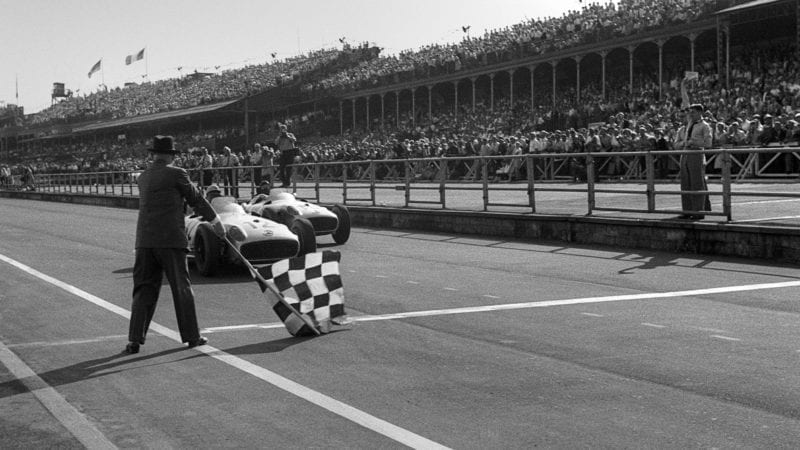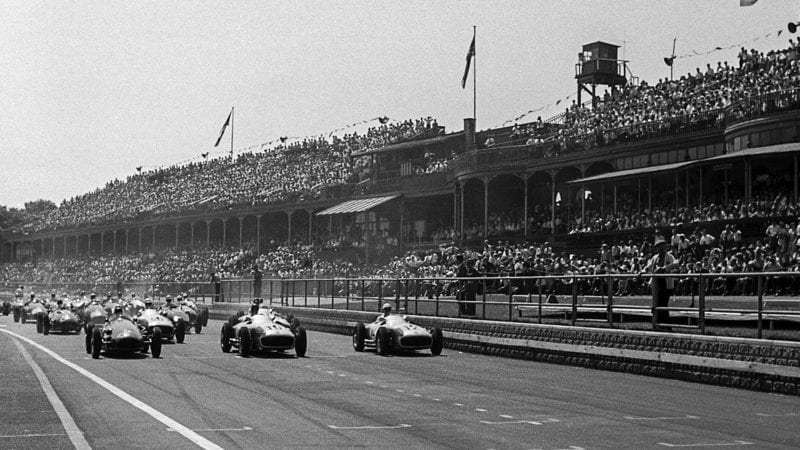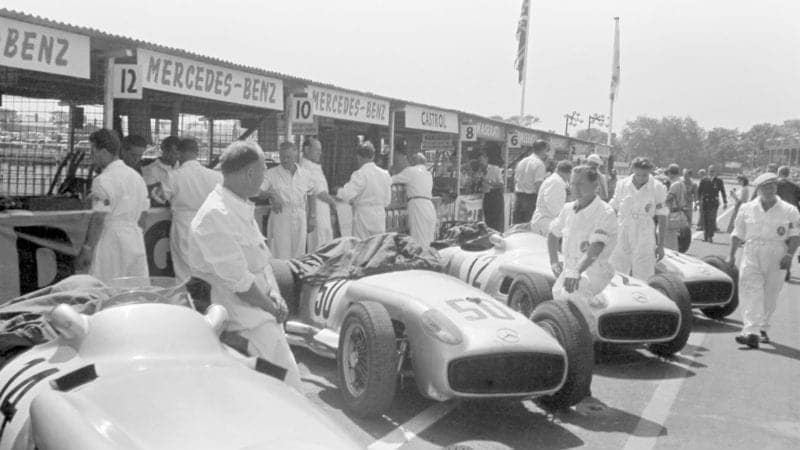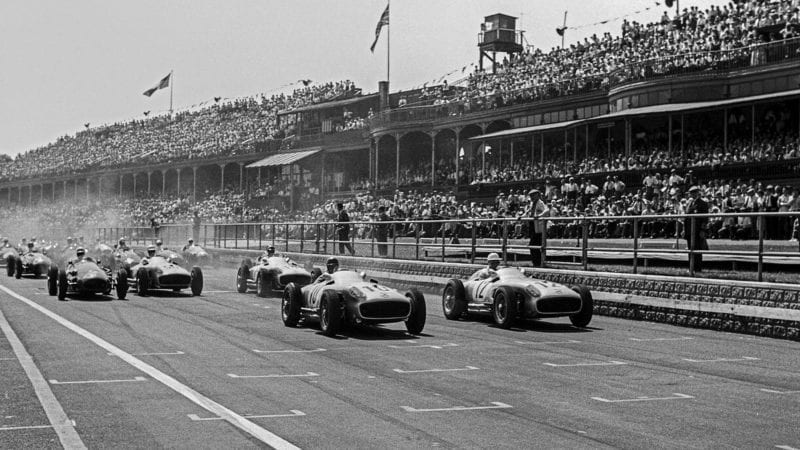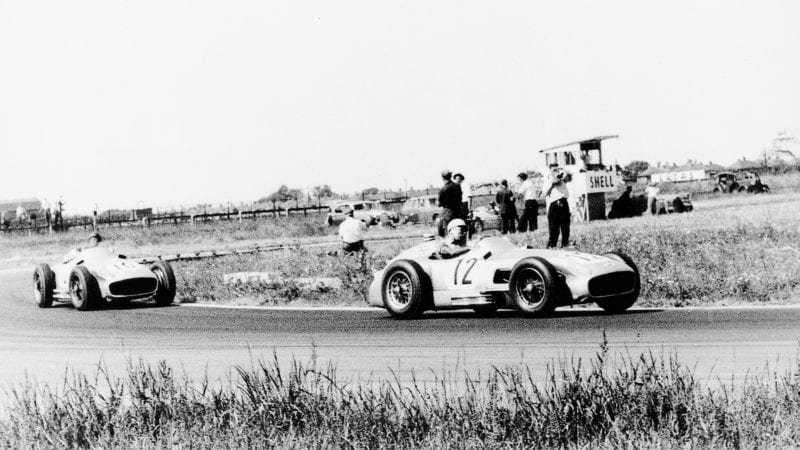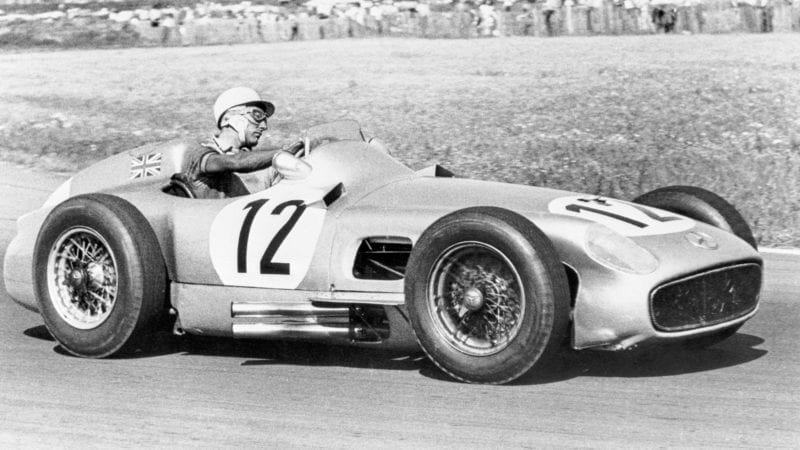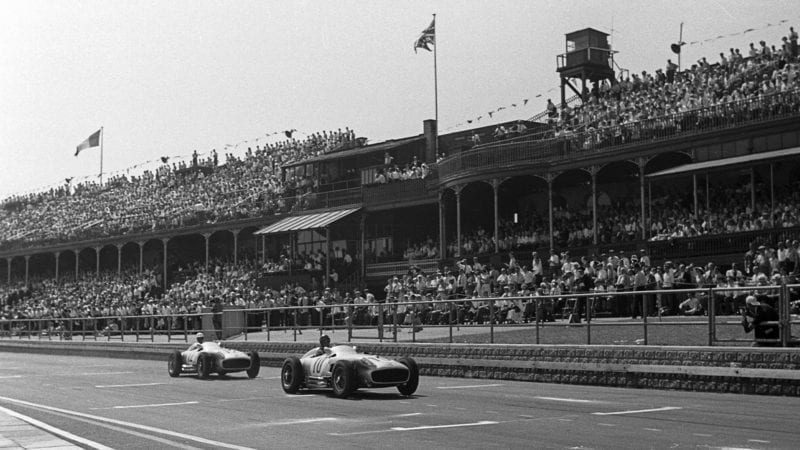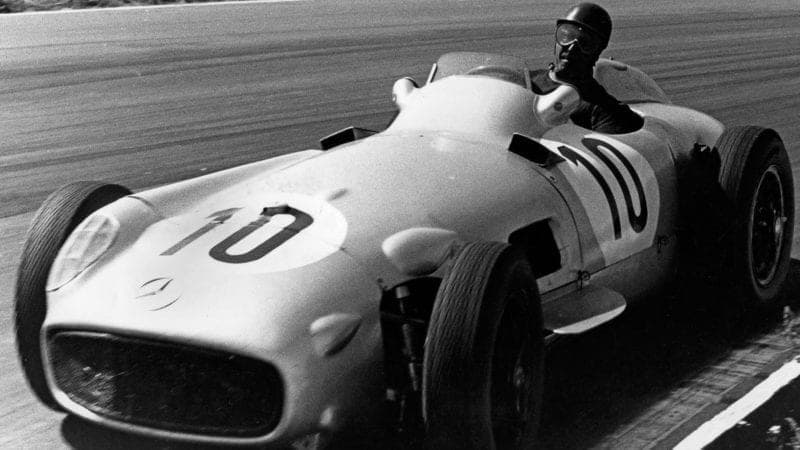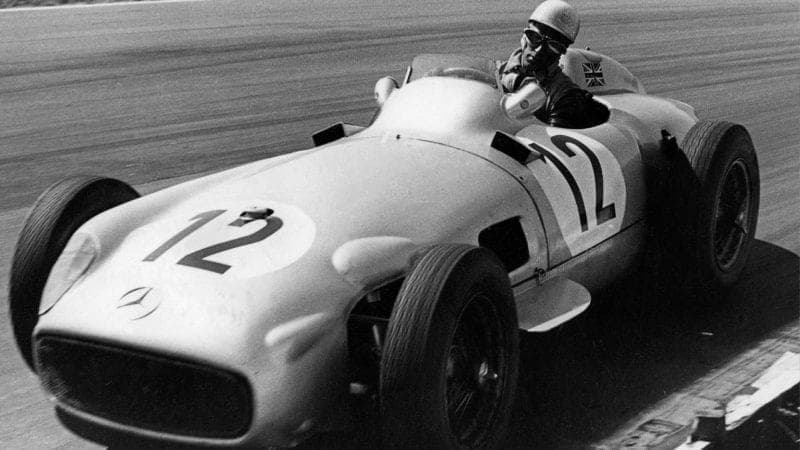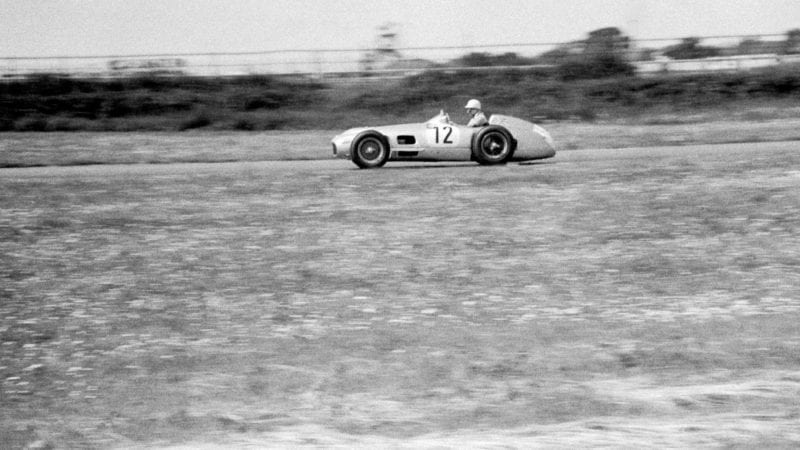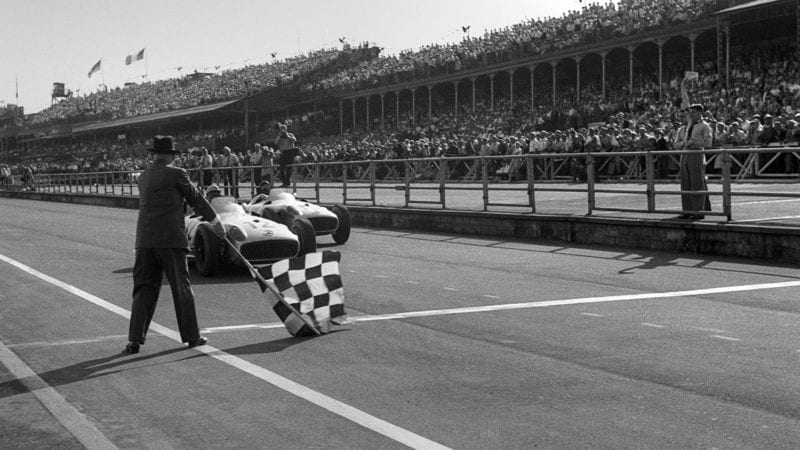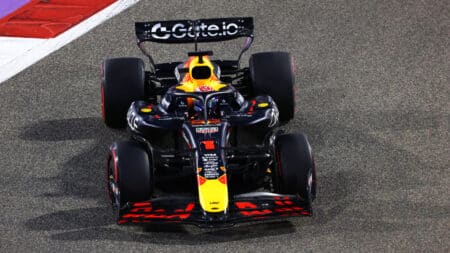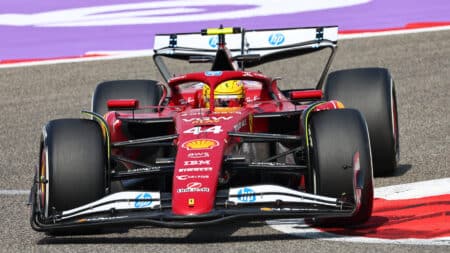Fangio moved ahead again for eight laps – mainly teaching, partly proving a point – before Moss repassed. With clever use of backmarkers, the local hero was then able to establish a 10-second lead a little beyond half-distance.
Neubauer hung out ‘Regulare’: hold position. Was that the sign?
Then ‘Piano’: gently. No, was that the sign?
Moss throttled back, Fangio less so, and they were nose to tail once more.
On lap 88, Moss matched his pole time to set a new lap record – definitely making a point: fast and fit. Exiting the last corner of the final lap, however, and unsure of the etiquette on this loaded occasion, he hesitated, glanced and gestured. If there was a plan, be it Fangio’s or otherwise, he was not privy to it. Fangio drifted wide and crossed the line still two-tenths in arrears, neither man going flat chat.
Although nothing was said in the immediate aftermath, Moss’s gesture of placing the laurel wreath over his team leader’s shoulders spoke volumes. Many years later, he asked directly if he had been allowed to win. Fangio replied, ‘No. It was your day.’
Perhaps Fangio could have won. Perhaps Moss could have pressed home his advantage in the second half. Undoubtedly, the respect between them was total. Fangio considered Moss a worthy winner. And Moss was a worthy winner because it had not been handed to him on the plate.
Mercedes-Benz finished 1-2-3-4 that day – but it had crushed with a velvet glove. Moss and Fangio, team-mates Karl Kling and Piero Taruffi, Neubauer and designer Rudi Uhlenhaut had struck a perfect balance in every respect. That’s a rare thing in GP motor racing. PF
